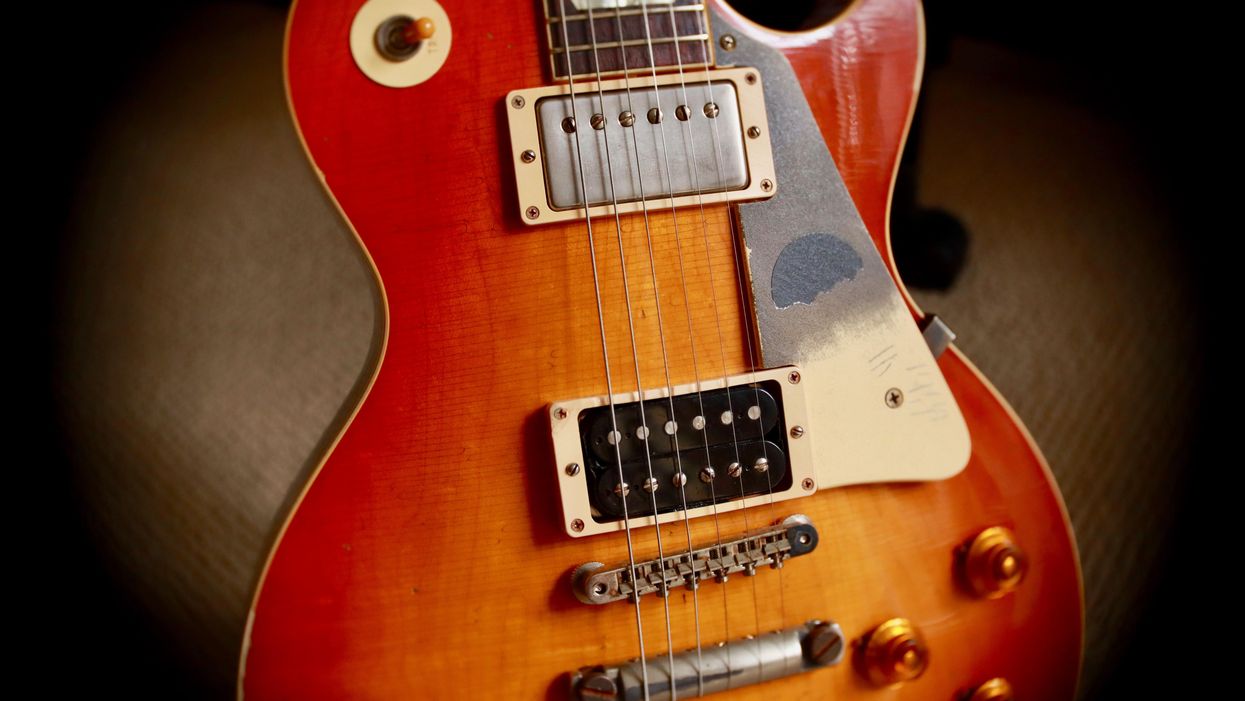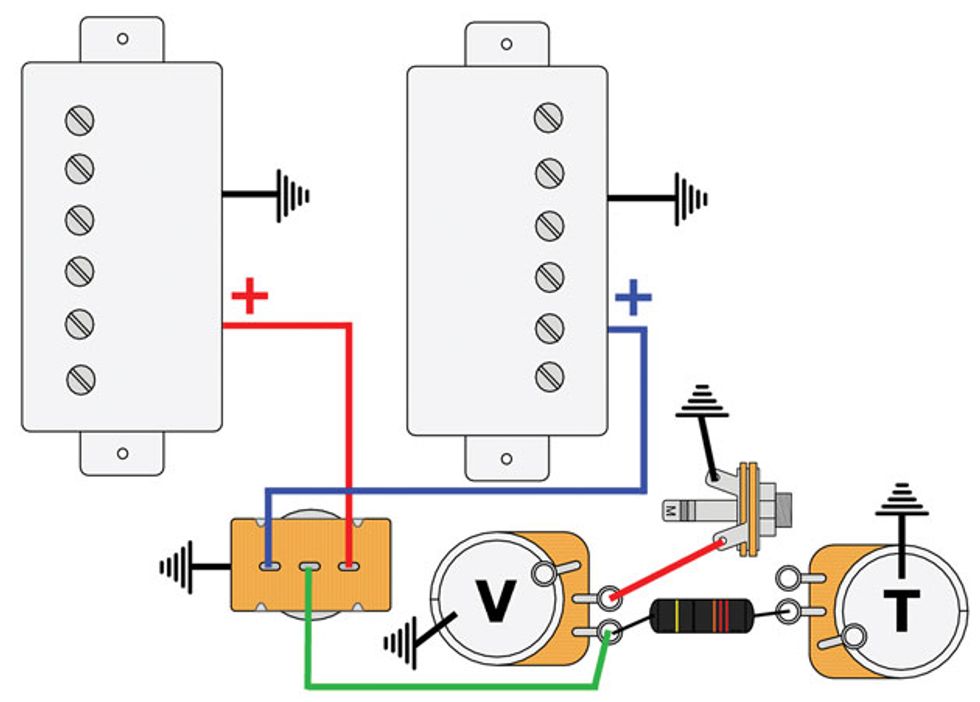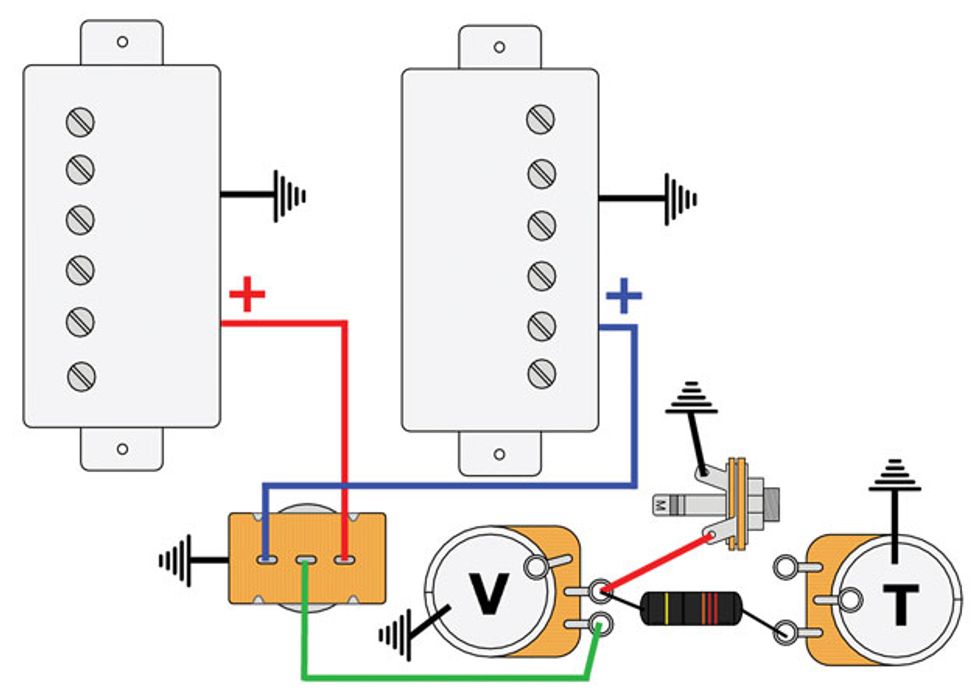Fig. 1. Image courtesy of singlecoil.com.
This month we're going to explore the first of three “Les Paul master wirings," which involve rearranging the control layout. As you know, when we talk about Les Paul mods, we're usually referring to a two-humbucker configuration with individual master volume and master tone controls for each pickup. That means you can apply these mods to virtually any guitar with similar configurations, including SGs, ES-335s, and countless other models from many manufacturers.
The Les Paul design dates back to the mid '50s and has changed only slightly since then. Gibson has experimented with various tone caps, tone-pot wirings, and pot resistances and tapers. Yet you still encounter the original '50s wiring concept in today's Les Pauls. Gibson never abandoned the notion of separate volume and tone controls for each pickup.
The basic idea: Players would dial in a lead tone from the bridge pickup (with, say, the volume at 8 and the tone control fully open), and then switch to a softer neck-pickup rhythm tone (perhaps with the volume at 5 and tone backed down to 6). The 3-way toggle switch can change quickly from lead to rhythm and back. It's like having two tone presets, plus both pickups in parallel in the middle position.
This arrangement works great, and almost every other guitar company copied it. But the dual-volume/dual-tone design is now almost 60 years old, and many of today's players prefer different configurations. We regularly perform such mods in our shop. We refer to some of the most common arrangements as “master wirings" because one of their main goals is to create a master-volume function for both pickups, removing the need for at least one volume control and freeing up one or two pot positions for other uses, such as kill switches, phase-reverse switches, rotary switches, blend pots, and the like.
Here are three common master wirings:
Master volume + master tone
Master volume + two tone controls
Master tone + two volume controls
We'll consider all three options, starting this month with the most radical one: master volume + master tone.
“Master wiring #1" allows you to control the entire guitar with only two pots, much like in a Telecaster circuit. This arrangement lets you remove two pots, leaving the holes unpopulated, or using them for alternative functions.
We recently modded a customer's SG this way. He wanted a kill switch in one of the now-vacant holes, plus a second switch to toggle between two different tone caps: 0.022 µF paper-in-oil cap for the bridge pickup, and a “lighter" 0.01 µF Mylar cap for the neck pickup. (He was totally happy with this configuration, but of course, you can use the two unpopulated holes however you like.)
Let's look at two versions of master wiring #1: one based on modern Gibson tone-control wiring, and one based on vintage '50s-style wiring. Fig. 1 shows the modern option. Here, the tone control is linked to the volume pot's third lug via the tone capacitor. This is the usual arrangement on most contemporary guitars.
Fig. 2. Image courtesy of singlecoil.com.
Fig. 2 depicts the '50s-style option. Here the tone capacitor connects to the volume pot's middle lug. Some players prefer this arrangement because it preserves more high end when you roll down the volume pot.
That's it! Soon we'll look at the other master wirings, but next month I'll show you a very special Telecaster circuit designed by the great Bill Lawrence, so stay tuned. Until then ... keep on modding!













































